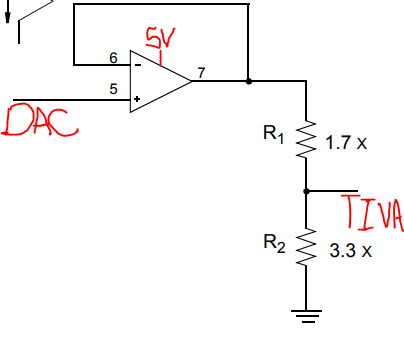Other Parts Discussed in Thread: TM4C1294NCPDT, , CD74HC4067, SN74HC00
I am trying to measure a 0-5V analog signal with a 0-3.3V tolerant analog input pin. I'm planning on using an op-amp as a buffer then adding a voltage divider, but is there a simpler solution? I need 20 signals, so that's a lot of external components with a cap and resistor for every opamp. Any ideas?


